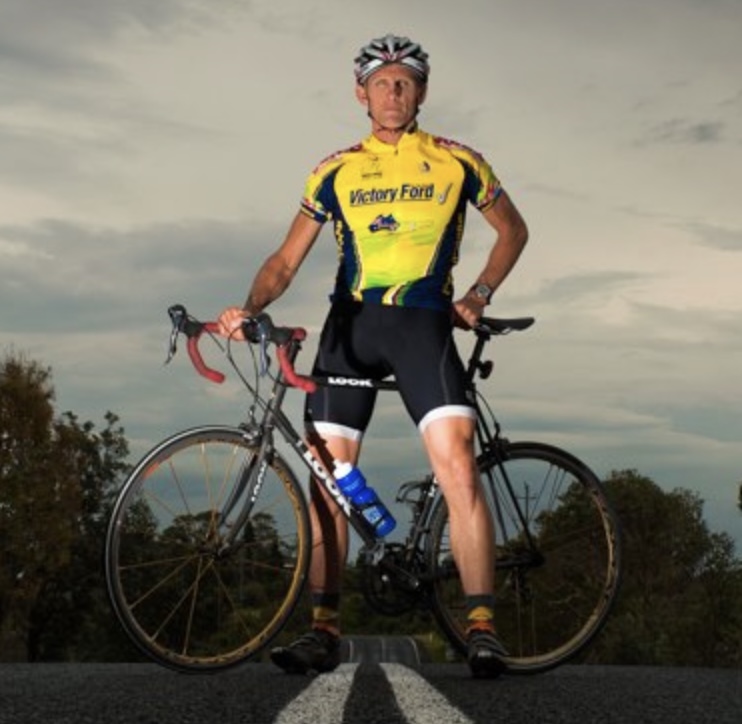
Best Lenses for Sports Photography in 2023
Learn how to pick the best lenses for sports photography. Find out what factors to consider, and what lenses to choose for different sports.
In this article, you’ll gain insights into the best lenses for sports photography.
As a photographer who has captured plenty of my grandson’s soccer games, I know the value of a good sports lens.
With sports photography, every shutter click matters, and the lens you pick can mean the difference between a good photo and a great one.
We’ll delve into what makes a lens ideal for capturing fast-paced sporting action, whether it’s a wide angle or a telephoto.
I’ll explain the interplay of aperture, focal length, and speed and discover why certain lenses outperform others on the field.
No matter the sport – soccer, basketball, cycling or surfing, the tips in this article will help you make an informed decision.
By the end, you’ll understand exactly why it’s worth investing in a great lens for sports photography and which ones are right for your needs.
Table of Contents
What Factors are Important in a Lens for Sports Photography?
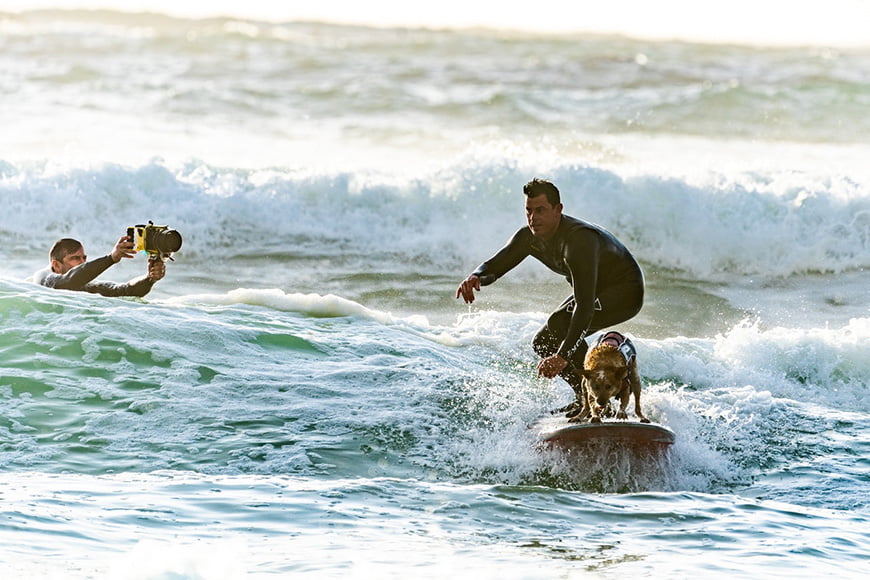
Credit: Guy Kawasaki
In a lens for sports photography, you need speed and the correct focal length.
That focal length will normally have more reach than your average everyday lens, as you often need to shoot action that is far away.
We’re talking lenses of up to 600mm in extreme cases.
Speed (or maximum aperture) is one of the most important things. In sports photography, a faster lens and shallower depth of field will be more useful to you than a 70-300mm with a slow aperture.
Image stabilisation is also nice to have but not essential. In sports photography, your shutter speeds are often so fast that this feature doesn’t matter.
In addition, most sports photographers use monopods or tripods to stabilise their cameras, particularly in low light.
What Focal Length Is Best for Sports Photography?
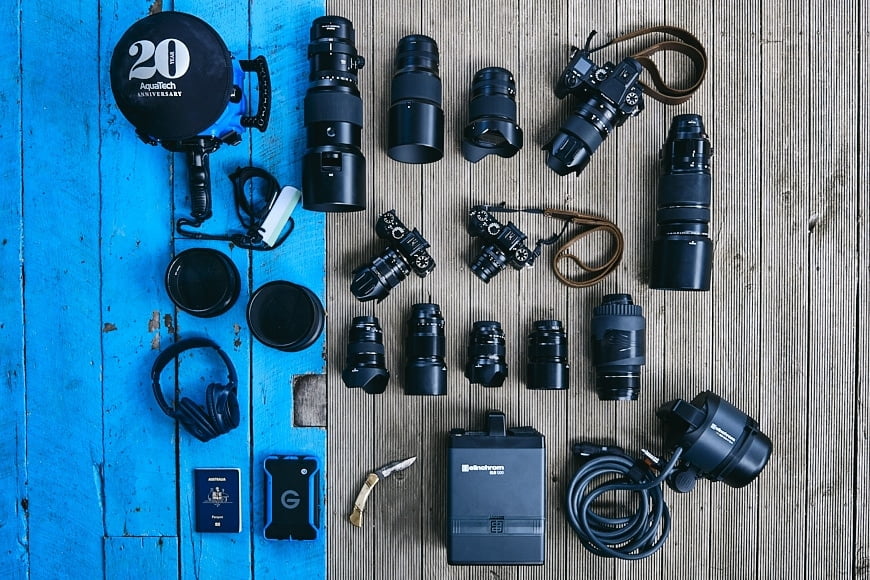
Sports Photography Gear | Credit: Russell Ord
The 70-200mm is the classic focal length for sports photography, and just about every pro sports photographer has one in their kit. It’s fast, has a versatile focal length, and is good for just about any sport.
For football and soccer, you might want to go as long as 100-400mm. The field is large, and you have lots of light, so a long lens should serve you well.
Depending on the stadium, you might be reasonably close to the field, or there might be a track between you and the field (assuming you don’t have a pass and you’re shooting from the front row seats).
For ice hockey, a 100-400mm and a 70-200mm work fine, but the 100-400mm will usually give you better shots, as you need to be fairly far away to shoot over the plexiglass.
However, if you can shoot from behind the goal, you can get great wide shots.
For boxing, depending on where you are, you might want a 70-200, but if you have access to ringside, a 24-70mm can give you some dramatic shots through the ropes.
A good idea to gauge which lens you need is to write to other sports photographers shooting the sports you want to and ask them what’s in their kit bag (photographers are generally friendly and will normally reply). Or, just look at the featured sports photographers on Shotkit.
Looking at sports photos helps, too, as it’s quite easy to tell which focal length they use just by looking.
A good rule of thumb, though, is that you’ll need to build your kit around a 70-200mm. That should be your first lens. You can shoot everything with it.
As you shoot more sports, you’ll see if you need more reach or more wide options.
Do I Need a Fast Lens for Sports Photography?

Yes, whatever sports photography lens you choose, make sure it’s ‘fast’ – i.e. the best lens you can afford with a large maximum aperture.
The more light that can reach your sensor, the faster the shutter speeds you’ll be able to use without having to resort to higher ISOs. And you need to use fast shutter speeds for sports photography.
Fast lenses also allow you to shoot in a greater variety of lighting conditions.
And, the faster the lens, the more you’ll be able to control your depth of field and isolate the action from the (sometimes confusing) background, creating better photographs.
Which Is Better for Sports Photography – a Zoom Lens or a Prime?

For sports like swimming, gymnastics, fencing, and indoor track, a superfast prime is needed because the lighting is generally terrible in the pool and gym.
Also, with these sports, you are generally tracking athletes who stay in the same position relative to you, so you don’t need the flexibility of a zoom lens rather than a prime lens.
For many other sports, for example, football, rugby, tennis, and so on, there’s more movement of the athletes relative to your position, and you need to be able to reframe quickly.
In these situations, a telephoto zoom lens is essential.
The truth is, if you’re serious about shooting any sport, you need appropriate gear, and that means having several cameras for sports with different lenses so that you can adapt to changing shooting conditions at speed.
Remember that you can always rent lenses if your budget can’t stretch to a new purchase – this is particularly useful when you need to use a telephoto zoom lens with a fast aperture, which are typically expensive.
Do I Need Image Stabilization When Shooting Sports?
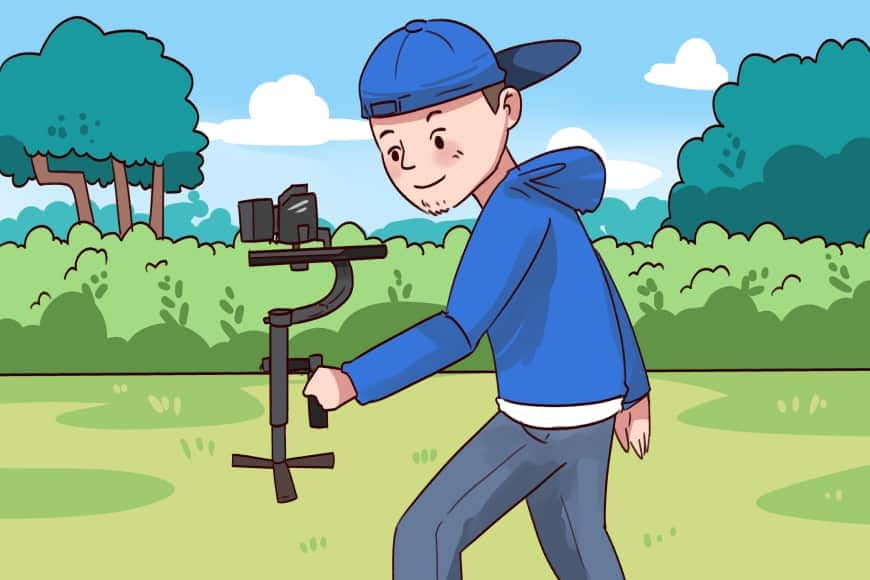
Shutter speeds are so high in sports photography that you don’t necessarily need image stabilisation.
Also, lenses without image stabilisation are generally less expensive, so if you can find one, go for it!
Having said that, it depends on the aperture of the lens for sports photography you’re using. A variable aperture lens with f/8 or even f/11 can cause problems.
You need to use slower shutter speeds to let in enough light, and that’s when image stabilisation or a tripod or monopod will help you out.
Also, given that you are often shooting sports with focal lengths from 200mm and longer, and sometimes handheld, any extra aid with getting sharp images is welcome.
What Are the Best Lenses for Sports Photography in 2023?
Sports photography lenses are well covered in the market across manufacturers.
Let’s have a look at some of the best lenses for sports and action photography:
Best Canon RF Mirrorless Lenses for Sports Photography (Full-Frame)
Canon RF 70-200mm f/2.8 L (Best All-Around)
This is a high-quality telephoto zoom lens for sports photography, part of Canon’s L-series, which guarantees you great optics and build quality.
Its fixed f/2.8 aperture provides excellent depth of field control and low-light performance, and its focal length is extremely versatile.
The lens also has built-in image stabilisation.
Canon RF 100-500mm F4.5-7.1 L (Best for Football and Soccer)
The broad focal range offered by this lens will allow you to get in really close to the action while still giving you a lot of flexibility to zoom out, which is perfect for shooting a game like football.
Its variable aperture won’t give you the best low-light performance, but football is either played in the day or on an illuminated pitch when it’s dark, so that won’t be a problem.
Canon RF 70-200mm f4 L (Best Mid-Priced Sports Lens)
This a portable, compact lens for sports photography with a decent fixed aperture.
Image quality is excellent, and you have built-in image stabilisation to help you get sharp shots.
Canon RF 100-400mm F5.6-8 (Best Budget Choice)
This is a very versatile lens with a useful range for a good price.
You won’t get the best low-light performance, but it’s not too shabby, either.
Canon RF 600mm f11 (Best Budget Prime)
If you need to get really close to the action and don’t have much to spend, this is a good option.
It’s lightweight and compact but still with a solid feel.
That f/11 aperture is tricky, though. Make sure you’re shooting in good light conditions or with a tripod or monopod if you’re not.
Best Nikon Z Mirrorless Lenses for Sports Photography (Full-Frame)
Nikon Z 70-200mm f/2.8 (Best All Around)
This is a professional-level piece of kit, which gives sports photographers great versatility.
The fixed aperture will help out in low light and also means that fast shutter speeds are available across the focal length.
Nikon Z 100-400mm f/4.5-5.6 (Best for Football and Soccer)
This lens for sports photography offers an excellent zoom range, so it’s ideal for those who need to shoot subjects and action both up close and far away, like football photographers.
It has in-built image stabilisation, which helps out in getting steady shots, which is especially useful for this lens’ variable apertures.
Nikon Z 24-200mm f/4-6.3 (Best Budget Option)
The Nikon Z 24-200mm is an extremely versatile zoom lens for sports photography, which will allow you to shoot from a good, wide perspective and zoom in.
Its variable aperture is not the best for low light or fast shutter speeds, but it’s not too bad either, and anyway, it’s a great quality lens for the price.
Nikon NIKKOR Z 70-180mm f/2.8 (Best Value)
This option won’t match the Z 70-200 for autofocus speed and image stabilisation, but it’s virtually the same otherwise, minus 20mm, and as such, represents fantastic value.
Image quality is great, with sharp pictures and good colours and contrast.
Nikon NIKKOR Z 400mm f/4.5 (Best Prime Lens)
This is a high-quality prime lens for sports photography that will enable you to capture action from a huge distance.
Its aperture doesn’t sound like much, but it’s definitely fast enough to shoot fast action at high shutter speeds in difficult lighting conditions.
It’s small (for this kind of lens), lightweight, and has image stabilisation.
Best Sony FE Mirrorless Lenses for Sports (Full-Frame)
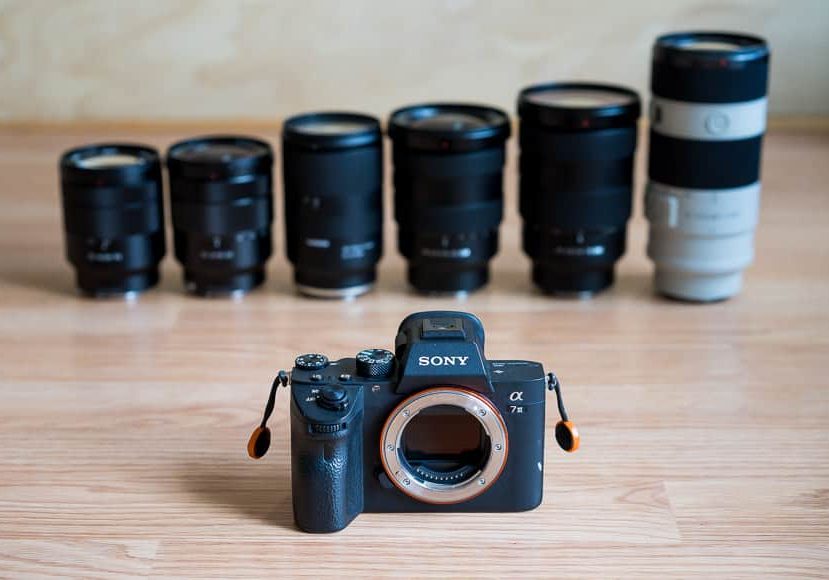
Marc Bergreen
Sony FE 70-200mm f/2.8 (Best All-Around)
A great all-around sports photography zoom lens that offers maximum flexibility to the shooter.
Its constant aperture of f/2.8 across the range means that you can use it in low light, and it’s great for isolating action.
It has image stabilisation and excellent, accurate autofocus.
Sony FE 200-600mm F5.6-6.3 (Best for Football and Soccer)
This is the kind of focal range that is going to give you maximum flexibility, especially if you are photographing sports from a distance.
It’s the kind of range that will give you options for framing, too.
It has optical image stabilisation, so you’ll still be able to get sharp shots, even when shooting handheld.
Sony FE 70-300mm (Best Budget Option)
This is another versatile zoom lens and one that has a variable aperture that’s in a pretty tight range – f/4.5 – f/5.6.
It’s lightweight and portable, provides good image quality for a low price, and has the kind of focal length that will let you shoot most sports photography scenarios.
Best Nikon F Lenses for Sports Photography
Nikon Nikor 70-200mm f/2.8G ED-IF AF-S VR (Best Overall)
This is a much-loved sports photography lens among Nikon shooters, and for good reason.
It has a versatile range of focal lengths, a fast, fixed aperture, great autofocus capabilities, and built-in image stabilisation.
It’s truly a lens for people who want pro-level sports imagery.
Nikon Nikkor 80-200mm f/2.8 D ED AF (Best Budget Choice)
Although the Nikon Nikkor 80-200mm f/2.8 D ED AF doesn’t have built-in image stabilisation, it’s a high-quality, reliable option.
It has a great focal range and fast, constant aperture,
It’s difficult to pick one up new, but you can find them second-hand for a bargain price.
Nikon AF-S NIKKOR 70-200mm f/2.8G ED VR II (Best Value)
Another high-quality Nikon F zoom lens for sports photography, also with a fixed aperture of f/2.8 and that famously versatile 70-200mm focal range.
The images it produces are sharp, thanks to the quality of its build and the built-in image stabilisation.
It also has very fast, precise, and reliable autofocus.
Nikon Nikkor 300mm f/2.8 (Best Nikon Prime)
A prime with this kind of focal length and fixed aperture of f/2.8 is going to be pretty handy, whatever sport you are photographing.
The combination of 300mm and the fast aperture will ensure you can separate action and subjects from the background at fast shutter speeds.
Canon EF Mirrorless Lenses for Sports Photography
Canon EF 70-200mm f/2.8L (Best Overall)
This is a great lens for most sports despite the fact that it has no image stabilisation.
It’s fast enough for low light and indoor sports photography and has a decent amount of reach. It can be a bit hard to source one, but it’s a fantastic value.
It’s also compatible with 1.2x and 2x extenders if you need to get closer to the action.
(Amazon)
Canon EF 70-200mm f/2.8L IS III USM
If you definitely need image stabilization, you can bump up to this heavier and considerably more expensive lens.
It’s one of Canon’s most popular lenses ever, and, given its quality, that’s not a surprise.
It also works great on the R6 (with an adaptor), and whatever body you’ve attached, it has no problems keeping up any sports action, no matter how fast.
Canon EF 100-400mm f/4.5-5.6L (Best for Football and Soccer)
If you need more reach and will be working under bright conditions, which is always the case with shooting football, this is a great sports photography lens.
You can shoot action that’s both closer to you and pretty far away, given this lens’s vast focal range.
Canon EF 70-300mm f/4-5.6L (Best Budget Choice)
70-300mm is an excellent focal range for sports, giving you the latitude to shoot close-up or far away.
Although this zoom lens is on the cheaper side, it’s still one of Canon’s L series, which means it has the best quality optics.
It also has an in-built image stabilisation, which will help you out with that variable aperture.
Best Fujifilm Lenses for Sports Photography
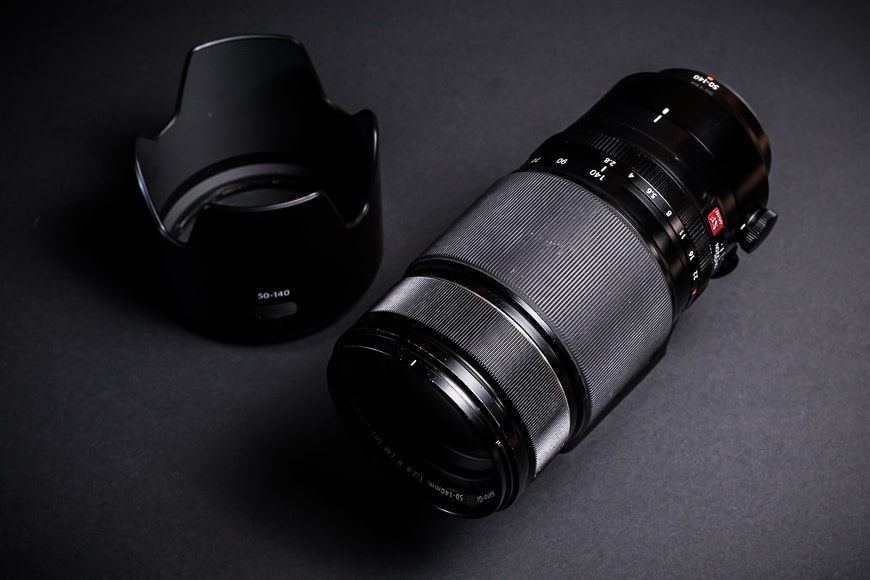
Credit: Greg Cromie
Fujifilm XF 50-140mm F/2.8 (Best Overall)
This 50-140mm zoom lens, which is the 35mm equivalent of 76mm to 214m, is a great overall sports photography option.
With its fast f/2.8 aperture, it’s also great in low light or for shooting sports indoors.
Fujifilm XF 150-600mm f/5.6-8 (Best Long Reach)
This is the 35mm equivalent focal range of 229-914mm, so it can really help you zoom in a long way and capture sports that are either happening a long way from you or that need you to have that kind of reach.
It has great image quality weather-sealing and in-built image stabilisation.
Fujifilm XF 100-400mm f/4.5-5.6 (Best for Football and Soccer)
The Fujifilm XF 100-400mm f/4.5-5.6 is very similar in terms of image quality to the 150-600mm above.
It does give you a bit more at the wide end, though, which is useful for photographing a sport like football when you need a good range of perspectives.
It, too, has in-built image stabilisation and is weather-sealed.
Best Olympus & Panasonic Lenses for Sports Photography
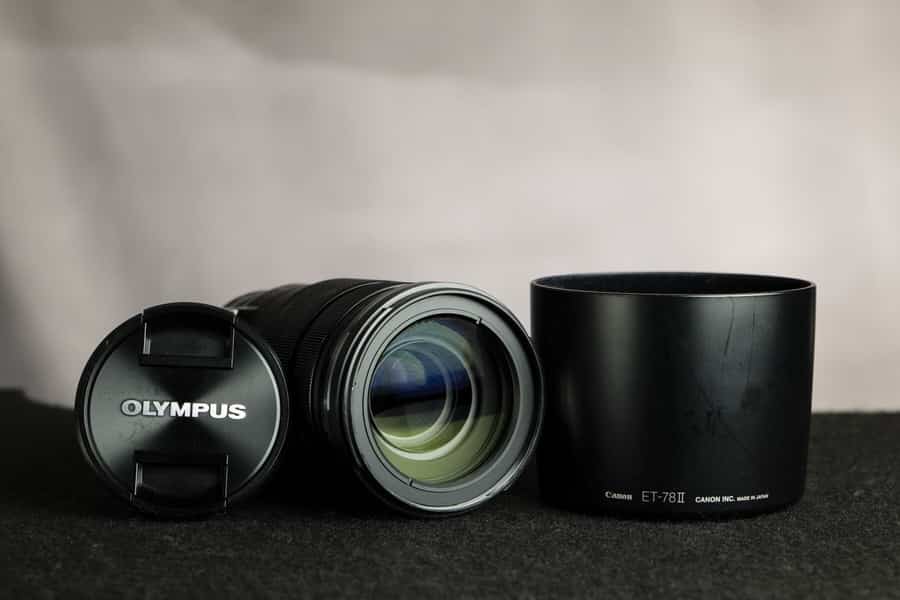
Credit: Steve Vansak
Panasonic Lumix G X Vario 35-100mm F2.8
A versatile zoom lens with a nice, fast aperture and a focal length that’s perfect for shooting sports.
You get good low-light performance and image stabilisation to help you get those crisp shots.
Panasonic Lumix G 100-300mm f/4.0-5.6 II
This is a good, broad zoom range that will allow you to shoot most types of sports.
It has a variable aperture, but the in-built image stabilisation will ensure that you’re not bothered by any shortcomings it might throw up.
Olympus M.Zuiko ED 40-150mm F/2.8 Pro
This zoom lens for sports photography is well-known for the high-quality images it produces, sharp and well-contrasted.
It offers a versatile focal range and the kind of aperture that will help you shoot fast and even in challenging light conditions.
It has excellent autofocus capabilities and built-in image stabilisation.
Olympus M.Zuiko 40-150mm f/4-5.6
This 40-150mm zoom lens is the 35mm, full-frame equivalent of 80mm to 300mm and, as such, another versatile option for shooting sports.
It’s extremely lightweight and compact for a telephoto lens, and it’s good value for money.
Olympus M.Zuiko Digital ED 300mm f/4
A super-telephoto prime lens, which is the full-frame equivalent of 600mm, it is perfect for capturing sports action at a distance.
Its f/4 aperture is not the fastest, but still fast enough for fast shutter speeds and excellent subject isolation.
It has a robust build and in-built image stabilisation.
Best Third-Party Lenses for Sports (full-frame)
Sigma 100-400mm f/5-6.3 DG DN OS Contemporary Lens (Sony E) $900
This is a versatile telephoto zoom range, which is a good all-round choice for sports photographers needing third-party lenses.
It offers great image quality and in-built image stabilisation. That’s a great help with the lens’ variable aperture, especially if you want or need to shoot handheld.
Sigma 70-200mm f/2.8 DG OS HSM Sports Lens (Canon, Nikon)
A pro-level zoom lens that provides you with maximum flexibility.
The focal range is great for most situations, and the aperture is one that will let you use high shutter speeds and shoot in low light.
Its image quality is exceptional, producing sharp, colourful, and evenly exposed photographs.
Tamron 150-500mm f/5-6.7 Di III VC VXD (Sony)
Tamrons are usually good value for money, and this lens is no exception.
You get a broad zoom range, plus in-built image stabilisation and good quality images.
Tamron 50-400mm f/4.5-6.3 Di III VC VXD (Sony)
Another affordable option, this Tamron 50-400mm offers a versatile focal range and in-built optical stabilisation.
It’s well-built, light, and compact, too.
Tamron SP 70-200mm f/2.8 Di VC USD G2 (Canon EF, Nikon F)
This is an excellent choice for Canon and Nikon shoots looking to photograph fast sports action.
An aperture of f/2.8 will let you use high shutter speeds, isolate your subjects, and perform well in low light.
Its autofocus is lightning-fast, and it has image stabilisation. There’s no excuse not to get crisp sports photos with this lens.
FAQs about the best lenses for sports photography
What lens do most sports photographers use?
Most sports photographers, if they were to choose one lens only, would go for a 70-200mm f/2.8. That’s certainly my go-to lens when I shoot sports myself.
The focal range means you can cover a wide range of perspectives, and that fast aperture is essential for high shutter speeds, depth of field control, and to have no struggles with the light.
How do I get fast autofocus performance in sports photography lenses?
The best way is to buy lenses that are known for having fast autofocus.
Generally, it’s the more expensive lenses and the ones that have image stabilisation, but that’s not always the case.
One of the fastest lenses I’ve ever had, in terms of AF, was a cheap Tamron. So, shop around and read reviews.
Whatever their other specs, lenses with fast apertures always have faster autofocus, as the lens lets more light in.
You can help your lens, too, by choosing the optimal AF tracking mode in your camera for the sports action you’re shooting.
What lens should I use for indoor sports photography?
It’s best to use a fast telephoto zoom lens with a wide aperture. Something like a 70-200 f/2.8 would be great. But, as indoor spaces tend to be smaller, you might even need something wider, like a 24-70mm.
Is a 70-300mm lens good for sports?
Yes, it is. 70-200mm is pretty perfect for most situations, and having an extra 100mm of reach definitely wouldn’t hurt.
What lens do NBA photographers use?
They’d use a 70-200mm f/2.8 most of the time for its low-light performance and the flexibility it gives them with their compositions.
They may even use a 24-70mm occasionally, too, as the playing area is small, and shooting wide would help them include some context.
No doubt they’d have some telephoto primes in their bag, too, for close-ups.
Is a 200mm lens good for sports photography?
It is, but depending on the sport you’re shooting, you might struggle if it’s the only lens you have.
Ideally, you want a zoom lens that allows you to follow the action and quickly reframe.
A 200mm would be a great lens to have in the bag, but on its own, you’d probably find it restricting.











